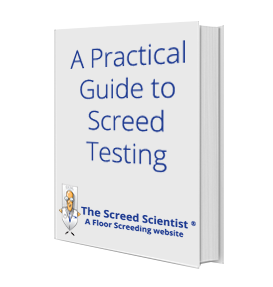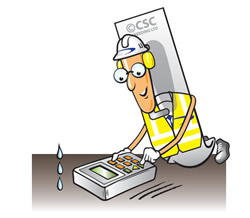
A Practical Guide to Screed Testing: What Do the Experts Say?

A Practical Guide to Screed Testing: What Do the Experts Say?
How important is it to assess the moisture content of screeds?
The biggest issue that has always been associated with floor screeding is the long drying period that stands as a major hurdle in the early completion of flooring. For any kind of flooring, the final floor finish (vinyl, tiles, wood panelling, carpets etc) cannot be laid to perfection, unless the screed on which it is laid has dried optimally.
According to industry benchmarks, it takes nearly four months (110 days) for a standard 75mm screed to dry to an acceptable level for taking up the final floor finish, provided – a relative humidity of 50% and a controlled temperature of 20C is maintained.
 Once this stipulated waiting period is over it is the responsibility of the floor finishing contractor to ensure that an accurate moisture assessment is done before going on to lay the final floor finish. This is because – a flaw in the assessment can lead to hasty decisions like the installation of expensive DPM or even end up in premature installation of final floor covering which can affect the quality of the entire flooring severely.
Once this stipulated waiting period is over it is the responsibility of the floor finishing contractor to ensure that an accurate moisture assessment is done before going on to lay the final floor finish. This is because – a flaw in the assessment can lead to hasty decisions like the installation of expensive DPM or even end up in premature installation of final floor covering which can affect the quality of the entire flooring severely.
Several methods are currently being practiced for assessing the moisture content in screeds.
Air Hygrometer Test: This is the method recommended by the British Standards. This involves the measurement of the moisture released by the screed into a sealed area over a time span of 72 hours (this is to reach equilibrium with concrete substrate). An accurately calibrated hygrometer is placed on the screeded floor and sealed for the prescribed time. The reading obtained shows the humidity in the sealed area, from which the moisture content is calculated. This is the traditional method and is not very widely used these days as the procedure is quite time consuming.
Concrete Moisture Test (CM Test): This is a method that yields speedy and accurate results and is preferred by most specialist screed manufacturers.
There are currently 2 methods followed for CM tests- destructive (Calcium Carbide test) and non-destructive (Tramex meter test)
- Calcium Carbide Test: A mid depth sample of the screed is taken and allowed to react with calcium carbide reagent. Upon reacting, the mixture releases acetylene gas, the amount of which indicates the level of moisture in the sample.
- Tramex meter: This is a more convenient method and is also accurate and speedy. The Tramex meter is an easy to use electronic device which can provide various measurement results. After choosing the CM measurement option from the menu, the meter simply needs to be put against the screeded surface to get the moisture content displayed in %.
Once the test results are obtained, it is up to the floor finishing contractor to ensure that the client is consulted before laying the final floor finish. It is important to arrive at a consensus with the client beforehand if the moisture content is above the desired level, to avoid any confusion later.
The three options that can be resorted to under such circumstances are:
- Wait longer, if the project is not on a strict time schedule
- Employ a third party to conduct a further test
- Go for the application of a surface DPM
The third option is however quite expensive, and could turn out to be more expensive than the screed itself. This is resorted to only under the duress of severe time constraint.
To avoid such issues, it is therefore extremely important to make sure that the screeds are given sufficient time for drying following the manufacturer’s instruction, and also that the moisture content has been measured accurately and has been verified before making any hasty decisions.
All the same, with the advancement in technology, specialised screeds like FlexiDry are now available, that can help in getting over such issues to a great extent. FlexiDry’s fast drying floor screeds come at a range of drying times as low as 21 days to 3 days, and light foot traffic can proceed as early as within 12 hours of screeding. Moreover, FlexiDry is a product that has been proven to be non reliant on the standard 20C benchmark, and is ideal for projects that are on a strict timeline.





